 Kamal Kant Chandrakar has received a prestigious NASA Earth and Space Science Fellowship. Kamal is working for his PhD degree with Prof. R. Shaw in the area of atmospheric physics.
Kamal Kant Chandrakar has received a prestigious NASA Earth and Space Science Fellowship. Kamal is working for his PhD degree with Prof. R. Shaw in the area of atmospheric physics.
Congratulations Kamal!
 Kamal Kant Chandrakar has received a prestigious NASA Earth and Space Science Fellowship. Kamal is working for his PhD degree with Prof. R. Shaw in the area of atmospheric physics.
Kamal Kant Chandrakar has received a prestigious NASA Earth and Space Science Fellowship. Kamal is working for his PhD degree with Prof. R. Shaw in the area of atmospheric physics.
Congratulations Kamal!
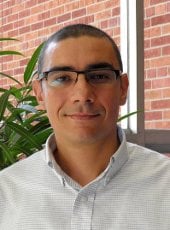 Professor Ramy El-Ganainy has recently been published on the nature international weekly journal, titled ‘Enhanced sensitivity at higher-order exceptional points’.
Professor Ramy El-Ganainy has recently been published on the nature international weekly journal, titled ‘Enhanced sensitivity at higher-order exceptional points’.
Congratulations Professor El-Ganainy!
 Merelaniite, a new mineral discovered by Michigan Tech professor John Jaszczak, was named Mineral Of the Year for 2016. The mineral was selected by the International Mineralogical Association (IMA). Sergey V. Krivovichev of the IMA says this annual initiative was started in 2014, and “recognizes a single new mineral species published in the previous year as most interesting and outstanding among others.”
Merelaniite, a new mineral discovered by Michigan Tech professor John Jaszczak, was named Mineral Of the Year for 2016. The mineral was selected by the International Mineralogical Association (IMA). Sergey V. Krivovichev of the IMA says this annual initiative was started in 2014, and “recognizes a single new mineral species published in the previous year as most interesting and outstanding among others.”
Congrats!
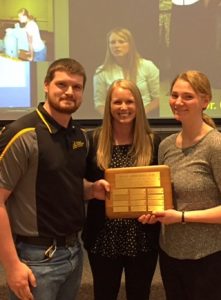 2017 Michigan Tech Grad and former Physics Laboratory Specialist Benjamin Manning (pictured left) has been named Georgia Teaching Fellow by the Woodrow Wilson National Fellowship.
2017 Michigan Tech Grad and former Physics Laboratory Specialist Benjamin Manning (pictured left) has been named Georgia Teaching Fellow by the Woodrow Wilson National Fellowship.
Click here to read more.
Congratulations Ben!
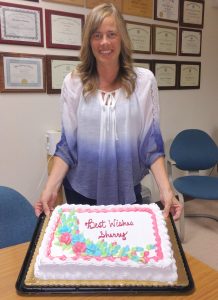 Our best wishes go to our office assistant, Sherry Andersen, as she leaves us to pursue new adventures in warmer climates.
Our best wishes go to our office assistant, Sherry Andersen, as she leaves us to pursue new adventures in warmer climates.
Good luck, Sherry!
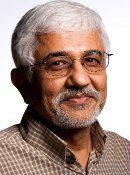
Greg Odegard (MEEM) is the principal investigator on a project that has received a $1,000,000 research and development grant from the National Aeronautics and Space Administration. Ravi Pandey (Physics), Julia King (MEEM) and Trisha Sain (MEEM) are Co-Pis on the project titled “Institute for Ultra-Strong Composites by Computational Design (US-COMP).”
This is the first year of a five-year project potential totaling $14,999,995.
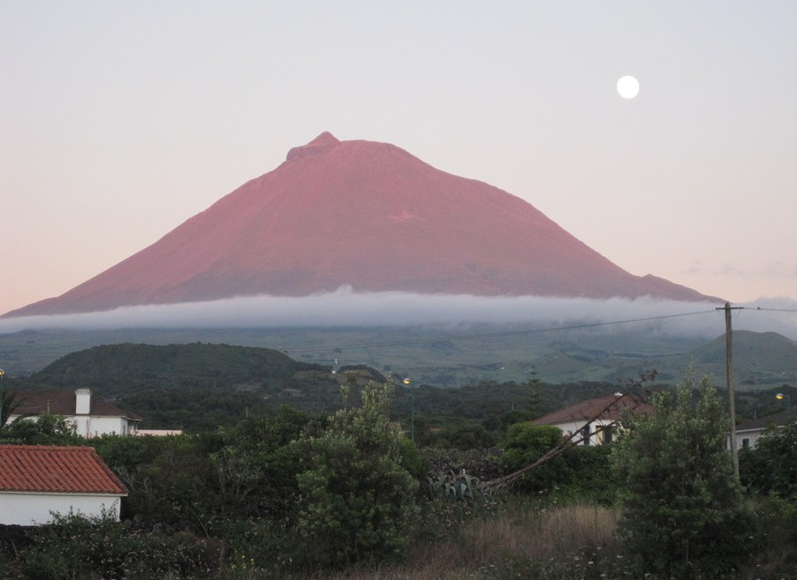 Bo Zhang (2015), currently a research scientist at the National Institute of Aerospace in Hampton, VA, and co-authors published a paper, “Ten-year chemical signatures associated with long-range transport observed in the free tropophere over the central North Atlantic” in Elementa Science of the Anthropocene Journal.
Bo Zhang (2015), currently a research scientist at the National Institute of Aerospace in Hampton, VA, and co-authors published a paper, “Ten-year chemical signatures associated with long-range transport observed in the free tropophere over the central North Atlantic” in Elementa Science of the Anthropocene Journal.
Ten years of observations of trace gases at Pico Mountain Observatory (PMO), a free troposphere site in the central North Atlantic, were classified by transport pattern using the Lagrangian particle dispersion model FLEXPART.
The classification enabled identification of trace gas mixing ratios associated with background air and long-range transport of continental emissions, which were defined as chemical signatures. Comparison between the chemical signatures revealed the impacts of natural and anthropogenic sources, as well as chemical and physical processes during long transport, on air composition in the remote North Atlantic.

One million miles from Earth, a NASA camera is capturing unexpected flashes of light reflecting off our planet, and Alex Kostinski has helped identify them as ice particles high in the atmosphere. NASA, Health Medicine Net and Astrobiology Web have published news stories about the phenomena and the research.
Scientific American and Nature magazine reported on Kostinski’s research that helped NASA solve the mystery of flashes of light appearing over land, which turned out to be ice crystals high in the atmosphere. See the full story here.
Physics and mathematics major Crystal Massoglia was named the 2017 Physics Department Scholar. Congratulations, Crystal!
Arin graduated from our physics department with a bachelors in the year 2012, and went on to acquire a PhD. from the University of Colorado Boulder in Atmospheric and Oceanic Science. He’d like to thank all the faculty at Michigan Tech for their support during his undergrad years.